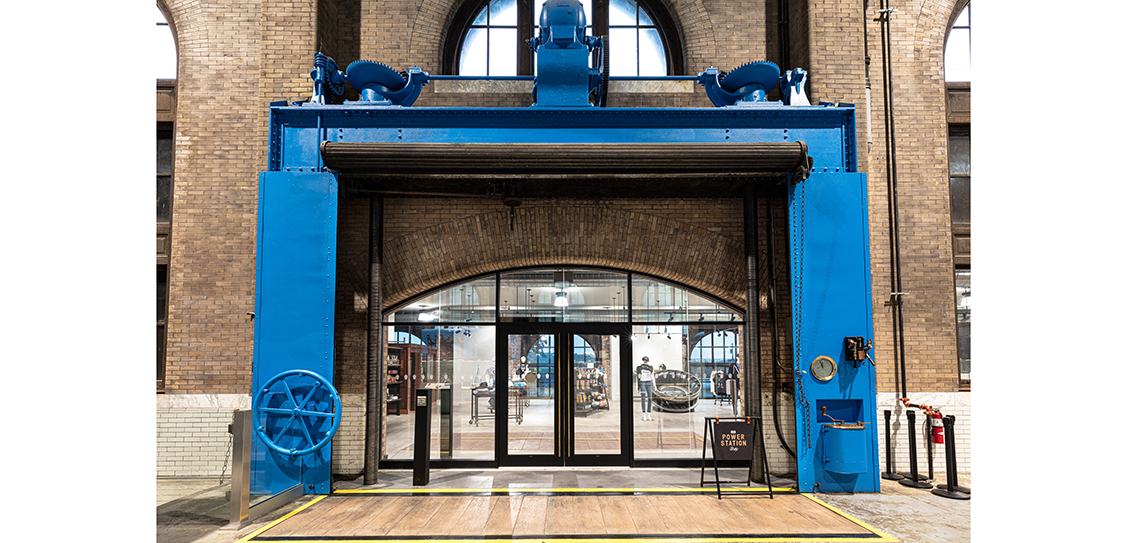The NPPS is poised to impact the economy of Niagara Falls once again. As part of a team engaged by Niagara Parks across numerous industries, +VG Architects was the Architect of Record in the adaptive reuse of the station into an educational and entertainment destination that brings the magic of electricity and its history alive. The project won the 2021 Lieutenant Governor’s Heritage Award for Excellence in Conservation.
“During the day, the building and its artefacts bring to life its history and breakthrough technology to show how electricity was generated here for 100 years. On weekends, children can attend workshops to explore their curiosity and creativity through science, technology, engineering and mathematics. At night, an exciting interactive sound-and-light show, Currents: Niagara’s Power Transformed, uses 3-D projections to immerse visitors in the path of a drop of water from Horseshoe Falls as it enters the station, travels through the turbines and is changed into electricity. We’ve put the magic and majesty of the falls back at the core of the visitor experience and are looking forward to hosting visitors from around the globe in the years to come,” Kim Viney, Senior Director of Business Development at the Niagara Parks Commission.
The NPPS complex consists of a gathering weir, an ice-screen barrier and outer forebay, inner forebay, generator hall, office administration block and control room, wheel pit, tailrace tunnel and the adjacent Niagara Parkway Bridge. The generator hall is the major, defining space within the powerhouse. An imposing 587 ft long and 102 ft wide, it contains Westinghouse’s and Tesla’s 11 generators, a parallel row of breakers and a travelling overhead crane. Adjoining the generator hall is the inner forebay, the area where water from the Niagara River was filtered by the fine ice rack to remove ice and debris before entering the penstocks, the massive pipes delivering water to the station’s turbines.
The generator hall now showcases the station’s equipment and artefacts repurposed as interpretive installations and interactive exhibits. Here, +VG created a new entrance vestibule, ticket desk and washrooms. The inner forebay still contains flowing Niagara water, coursing along the fine ice rack, as well as new retail and presentation areas. A new basement houses all-new HVAC, electrical, plumbing, drainage, ventilation and fire safety systems. A new glass-walled elevator will descend 180 ft down through the power station’s vast underground passages to the wheel-pit floor, where a 2,200-ft-long tailrace tunnel with interpretive media installations will lead visitors to a portal and a new viewing platform that extends into the lower Niagara River at the base of Horseshoe Falls.
The challenge required strict adherence to Ontario’s building code and safety regulations, while preserving the building’s historical integrity and as much as possible of the public’s view of the powerhouse’s original operation areas and equipment.
Building safety was also paramount for an attraction that will host thousands. Fire-control measures include a new fire-alarm system, sprinklers throughout, one-hour horizontal and vertical fire separations between all floors and at new entrances and exits; new exit stairs at each end of the building for all floors and the roof; and protected corridors, refuge areas and additional escape routes. An emergency standby generator, a mechanical ventilation system and a new municipal water line to ensure adequate emergency water flow were also added.



